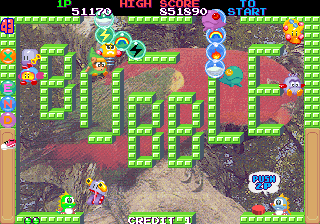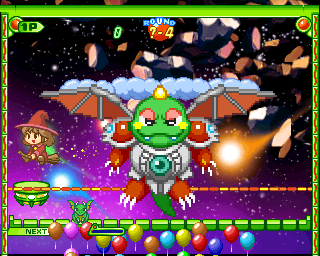

















 Round 51 / Super 1 - Bubblun (Bubble Bobble) |
 Round 52 / Super 15- Crab (Space Invaders) |
 Round 53 / Super 55 - Tiki (The Newzealand Story) |
 Round 54 - Silver Hawk (Darius) |
 Round 55 - Hipopo (Liquid Kids / Mizubaku Daibouken) |
 Round 56 / Super 65- Enemy (Elevator Action) |
 Round 57 - Ptolemy (The Fairyland Story) |
 Round 58 / Super 75 - Hero (Ben Bero Beh) |
 Round 59 - Sayo (Kiki Kaikai) |














